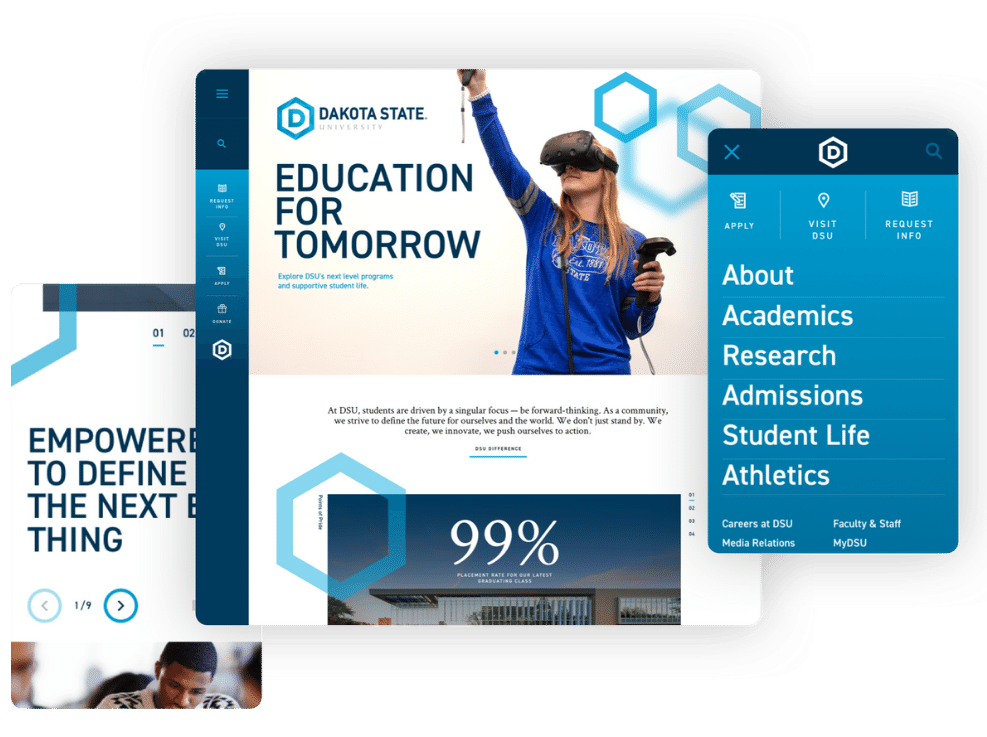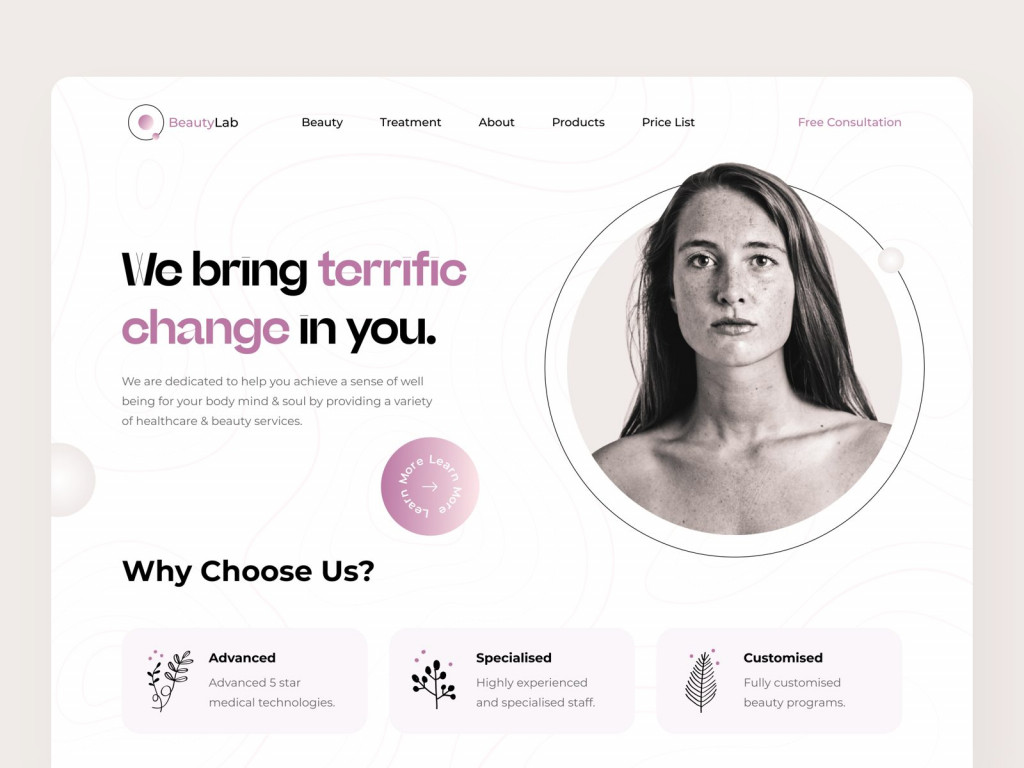The Power of User-Centered Website Layout in Growing Your Online Target Market
In a significantly affordable digital landscape, the importance of user-centered site design can not be overemphasized. By concentrating on the demands and behaviors of customers, companies can develop sites that not only draw in yet likewise engage a diverse audience. Efficient style principles-- such as intuitive navigating and access-- are vital in cultivating individual complete satisfaction and loyalty. Nonetheless, recognizing how to leverage these principles efficiently raises critical inquiries concerning application and influence. What strategies can organizations adopt to ensure their layouts resonate with customers and inevitably drive development?

Recognizing User-Centered Design
User-Centered Style (UCD) is a fundamental approach to site growth that focuses on the needs, choices, and habits of end individuals throughout the design process. This method stresses comprehending users deeply-- with research techniques such as meetings, surveys, and functionality screening-- to develop a website that resonates with them. By integrating user comments at every phase, developers can make certain that the final item lines up closely with customer expectations.
UCD advertises repetitive design, where models are tested and improved based on customer interactions and experiences. This cycle not just boosts functionality but likewise promotes a feeling of ownership amongst customers, as they feel their input is valued and impactful. In addition, UCD aids determine possible barriers and pain points in the customer journey, permitting developers to deal with these difficulties proactively.
Eventually, embracing UCD causes sites that are much more intuitive, appealing, and efficient. By positioning users at the center of the layout procedure, organizations can create electronic experiences that not just draw in however additionally retain their target market, driving better fulfillment and loyalty. In an affordable on the internet landscape, this strategy is vital for achieving sustained success.
Key Principles of Individual Experience
A successful user experience (UX) depends upon a number of vital concepts that direct the layout procedure and improve communication in between individuals and the internet site. Use is extremely important; the website should be instinctive, enabling customers to browse conveniently and locate details quickly. This includes clear labeling and a rational framework that lessens cognitive lots.
Second of all, accessibility plays a crucial role in making certain that all customers, despite their abilities or impairments, can efficiently involve with the web site. Incorporating alt message for images, key-board navigating, and screen reader compatibility promotes inclusivity.
Consistency is another crucial concept. A cohesive style language, from shade plans to typography, assists individuals build knowledge and trust with the web site (Website Design). It also enhances brand name identity
Moreover, feedback devices are essential. Users ought to receive instant and clear reactions to their actions, whether via aesthetic hints or confirmation messages, which enhances their self-confidence in navigating the website.
Last but not least, mobile responsiveness can not be ignored. With an increasing number of users accessing sites through smart phones, a style that adjusts seamlessly to different display dimensions is essential for preserving a favorable customer experience.

Advantages for Online Engagement
Reliable online interaction supplies countless benefits that can considerably improve a site's general efficiency - Website Design. By promoting significant interactions between users and the website, organizations can grow a devoted audience that returns with uniformity. Engaged customers are more most likely to share content, therefore boosting organic reach and attracting new visitors via word-of-mouth promo
Boosted online engagement additionally brings about boosted individual complete satisfaction. his explanation When users locate a web site that reverberates with their requirements, they are extra inclined to discover its offerings thoroughly, which can lead to higher conversion rates. Furthermore, interesting web content encourages customers to invest more time on the website, reducing bounce rates and favorably affecting search engine ranking algorithms.
Furthermore, efficient engagement gives vital understandings into individual preferences and actions (Website Design). By assessing user communications, companies can tailor their content and layout techniques to satisfy the evolving assumptions of their audience. This adaptive strategy not just increases interaction yet also strengthens the brand name's credibility as user-centric and receptive
Inevitably, prioritizing online involvement with user-centered layout creates a successful ecosystem where both the organization and the target market benefit, bring about continual growth and success in the digital landscape.

Methods for Reliable Layout
To maximize the advantages of online involvement, employing details techniques in site design is critical. Instinctive navigation is necessary; customers need to quickly locate details without confusion. A well-structured food selection, clear tags, and a sensible pecking order boost the user experience and decrease bounce rates.
Second, receptive layout is important in today's multi-device setting. Making certain that a click for more info web site adjusts effortlessly to various display sizes fosters availability, thus fitting a wider target market. This versatility not only this boosts individual contentment yet additionally positively affects search engine rankings.
Third, using visual power structure overviews users' attention to important components, such as contact us to activity (CTAs) Utilizing contrasting shades, varying font sizes, and calculated spacing can successfully guide users toward wanted actions, assisting in greater interaction.
Additionally, applying constant branding throughout all pages builds depend on and acknowledgment. A cohesive color typography, images, and plan strengthen brand identification and develop a specialist look.
Lastly, maximizing loading rates is essential. Customers are much less likely to involve with a slow-loading site, making performance optimization an important facet of effective layout. By incorporating these techniques, web site developers can enhance user experience and ultimately grow their on the internet target market.
Real-World Success Stories
Success stories in user-centered site style show the concrete benefits of prioritizing individual experience. One notable example is the redesign of the website for the nonprofit organization, Charity: Water. By including customer responses, the company streamlined navigation and emphasized narration with impactful visuals. As an outcome, they experienced a 250% rise in on-line contributions, demonstrating just how an instinctive layout can drive individual involvement and assistance.
Another compelling case is that of Airbnb, which used user-centered style concepts to boost their reservation process. By streamlining the individual journey and integrating individualized recommendations, they significantly reduced site abandonment rates. This concentrate on user experience added to an earnings development of over 70% in a solitary year, emphasizing the relationship in between properly designed interfaces and financial success.
Furthermore, the e-commerce titan, ASOS, carried out user testing to improve their mobile app. By attending to user discomfort points, they accomplished an amazing 30% boost in mobile sales. These examples highlight that spending in user-centered style not only enhances customer fulfillment however also drives substantial service results, reinforcing the essential function of user experience in achieving on the internet growth.
Final Thought
In conclusion, user-centered internet site style serves as an important approach for enhancing on the internet target market engagement. By prioritizing individual needs and preferences, companies can develop available and user-friendly digital experiences that foster loyalty and drive conversions. The combination of individual responses throughout the design procedure not just lowers bounce rates but also encourages expedition. Ultimately, taking on efficient user-centered layout concepts can dramatically add to a company's success in an affordable electronic landscape.
User-Centered Design (UCD) is a fundamental technique to internet site growth that focuses on the demands, choices, and behaviors of end individuals throughout the style procedure. By including customer feedback at every phase, developers can make certain that the final item aligns carefully with individual assumptions.
A successful individual experience (UX) hinges on a number of essential concepts that guide the design process and boost interaction between customers and the internet site.Success tales in user-centered internet site layout show the concrete benefits of focusing on customer experience. These instances highlight that spending in user-centered style not only improves customer satisfaction yet additionally drives concrete company results, enhancing the critical role of customer experience in accomplishing on-line growth.